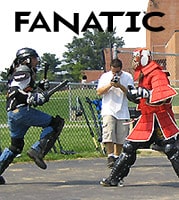Yesterday Eric Painter, a member of a military combatives group in Texas, called me about this old article on behalf of a member of his group that is currently on duty in Afghanistan. If a dude getting shot at by the guys that boned the Soviets wants something it gets top priority here. I looked up the old floppy file and found a mess of manually spaced tables that would drive Charles crazy. So I am editing the thing and re-formatting it so it can be posted by the 29th.
Thanks for the heads up Eric.
-James LaFond, 4/24/2012
Tom was looking for help talking the Department Of Justice nerds out of sending us back to Rodney King Land. Apparently, after some fat crack-head died of heart failure while being choked, the DOJ basically told the FBI [and by extension the other law-enforcement agencies around the country] to go back to beating people until they submit. Tom requested an incapacitation study, and I did my best. I doubt however if it helped him. After the virulent statements I made about law enforcement and the judiciary in my books I don't think anything I publish will be taken seriously by the DOJ.
Look, what follows is just a bunch of percentages.
In the meantime, in all of your self-defense encounters, please strive to remain to the right of this % symbol. Being to the left is not good.
Anatomy of the Knockout: A Comprehensive Study of the Circumstances & Effects of 512 Violent Encounters That Resulted In A Knockout
The following analysis is derived from the author's original study of 1675 acts of violence compiled between June 1996 and May 2000. These 512 acts of violence represent 33% of all violence, and resulted in the incapacitation as a result of impact (not exhaustion or choke) of 534 individuals. The study of these 534 incapacitations has been undertaken at the request of Supervisory Special Agent Tom D. Petrowski of the Legal Instruction Unit, FBI Academy at Quantico VA
The median KO rate is 33%.
Any aspect of violence (i.e. a drunken defender) associated with a KO rate of 34% or better should be regarded as a KO indicator.
All aspects associated with a KO rate of 32% or less should be regarded as KO counter-indicators.
Inside: 39% of indoor action resulted in a KO
Outside: 29% of outdoor action results in a KO
Night: 32% of nocturnal violence results in a KO
Day: 32% of daytime violence results in a KO.
Attack: 34% of attacks result in a KO.
Fight: 29% of mutual combats result in a KO.
Alcohol: 36% of drunks inflict KOs; 35% of drunks are KO'd
Law enforcement actions: 27% of law-enforcement or Security actions result in a KO
On the job violence: 27% of those attacked on the job are KO'd
Female aggressors: 20% of female aggressors inflict KOs
Female defenders: 21% of female defenders KO'd
Group aggressions: 45% of group aggressors inflict KOs
Group defenders: 61% of group defenders suffer KOs to one or more member of the group
Armed aggressor: 37% of armed aggressors inflict KOs
Armed defender: 45% of armed defenders inflict KOs
Trained aggressor: 39% of trained aggressors inflict KOs
Trained defender: 29% of trained defenders inflict KOs
Grappling: 32% of grappling situations result in a KO
Floor fights: 18% of floor fights result in KO
1-10 seconds: 25% of short actions result in a KO
10-60 seconds: 35% of mid-length actions result in a KO
Over 60 seconds: 45% of long actions result in incapacitations, indicating multiple strikes as a primary cause.
Throw: 62% of throws result in KOs*
Punch: 28% of KOs result from punching
Butt/Smash/Stomp: 75% of butting, smashing & stomping acts result in KOs*
*These results indicate that the actual fighting surface accounts for a lot of damage.
Kick/knee: 80% of kickers inflict KOs [I interviewed some sadistic kick-boxers.]
Low-impact note: Holds, slaps, chokes & pushing constitute the dominant activity in 30% of all violence.
Choke note: there were only 3 resolutions via choke in 1675 acts.
Combination method: only 17% of KOs resulted from integrated fighting methods or combined tactics. This generally reflected successful defenses and controlling behavior. This suggests that a skilled and versatile combatant, can by their vary inclusion in the encounter, limit the level of violence.
Aggressor medical: 7%
Defender medical: 24%
Aggressor legal: 23%
Defender legal: 7%
Death: 87% of violent deaths are suffered by defender
Twice: a heel-palm to the chin and a double palm to the chest. One other such blow was attempted (a knife-hand to the throat) which failed. Although 30% of KO situations involved a trained fighter (law-officer, boxer, wrestler, martial artist, kick-boxer) the attempted use of open hand blows was statistically insignificant. The 33% rate of success with open hand blows compares unfavorably to the 73% incidence of overall success. Only 23% of aggressions are not decisive. Keep in mind that numbers this small tend to provide skewed results.
100% success: Sucker-punches by competition level boxers to the jaw of individual.
100% success: Lateral outward ice-pick stab to face of chest.
98% success: Surprise come-from-behind strikes with heavy blunt weapons to the head of an intoxicated male.
95% success: Poor-leverage throws by males averaging 290 pounds against smaller members of aggressive groups and individual participants in match fights.
90% success: Punches thrown by an average-size athletic man against unprepared members of a poorly organized aggressive group.
90%: 'Sucker-kicks' by trained fighters.
Sports Models
19% of karate stylists who had no kick-boxing experience KO'd their opponents in violent situations. This is identical to the worldwide kick-boxing KO ratio of 19%.
20% of boxers KO'd their antagonist compared to the 34% worldwide boxing KO ratio. These were often urban street encounters that featured groups, weapons & indecisive resolutions.
90% of boxers involved in drunken brawls KO'd their opponents with 10% sustaining hand injuries. Not one of these boxers jabbed.
36% of martial artists with kick-boxing experience KO'd their antagonist. These encounters reflect a wide variety of circumstances and correspond to the worldwide boxing KO ratio. The side-kick was the dominant KO strike.
47% of identified non-combat athletes scored KOs in brawls and self-defense situations. These were primarily large throwers (football players) and small punchers (rugby, softball & soccer players) taking the fight to low-cohesion groups of smaller or softer males.
Firearm: 28%
Edged: 31%
Folding Knife: 19%
Fixed-blade knife: 38%
Pencil: 13%
Pointed tools: 44%
Prison-made shank: 64%
Razor: 5% (2 out of 40)
Sword: 33% (4 out of 12)
Blunt: 39%
Stick/baton: 37% (law officer); 20% (escrimador); 28% (untrained); 27% (group)
Bat: 58%
Board/club: 70%
Pipe/bar: 36%
Sap/black-jack/whip-stick: 47%
Stone/brick/trophy: 56% (individual); 88% (group)
Blunt tools: 42%
Machinery/Furniture: 42%
Everyday items like bottles: 20% (by defender); 7% (by aggressor)
Conclusion
In retrospect, after looking over these percentages, and having used them as a reference for my violence books and articles, I think we should look at the weapon types above and the likely-hood of their use to inflict knockouts less as a forensic question and more as a behavioral one. Look to the weapon, its employment, and its type as indications of intent and resolve. Comparing the prison shank to the sword is a perfect example of how much violence is invested in the mind as opposed to the tool. Look to the tool and the relationship the user forms with it as a reflection of their mindset.
Here is to staying to the right.











